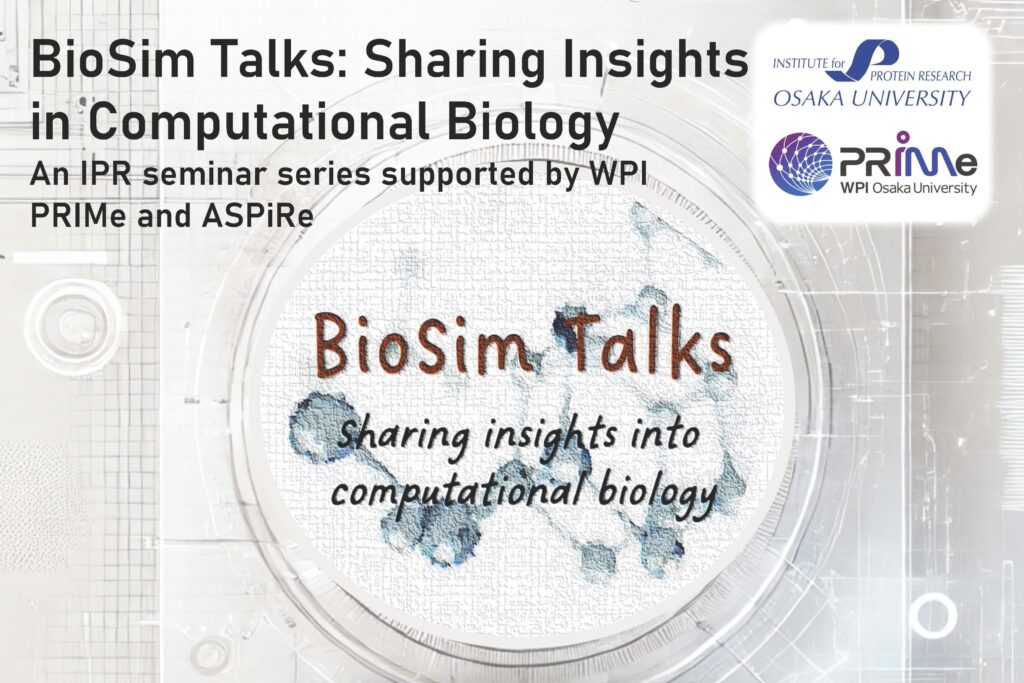1st IPR x WPI-PRIMe BioSim Talks
Sharing Insights in Computational Biology
An IPR seminar series supported by WPI PRIMe and ASPiRe
| Date & Time | July 3rd 2024 (Wed) 4.30 – 6.00 pm |
| Venue | Institute for Protein Research, Osaka U. (Suita Campus) 2nd-floor conference room |
| Speaker | George Pantelopulos, PhD. (Lab of Chem. Phys @ NIH/NIDDK, USA) |
| Title | Collagen-collagen interactions: Triple helix to helix-helix to fibrils |
| Registration | From here |
Abstract:
Collagen fibers are the predominant component of extracellular matrices and determine the mechanical properties of tissues. Collagen fibers are assemblies of ~1000-residue long collagen proteins folded into a triple helix. The collagen triple helix was the first folded protein structure successfully solved in the early days of structural biology.
Though the collagen triple helix is one of the most classic solved problems in structural biology, and the “molecular grammar” governing triple helix formation has been well characterized, the molecular grammar governing the driving forces of collagen dimerization and fibrillization and mechanical properties remains unexplored. To circumvent the daunting experimental challenges in examining collagen triple helix-triple helix interactions, we turn to computational methods. We have determined all-atom Molecular Dynamics (MD) simulation techniques and force fields which are best able to reproduce experimental characterizations of the atomistic structure and dynamics of collagen-like peptides.
Using MD simulations, we have undertaken investigations of a wide variety of systems such as the dimerization of a wide variety of collagen triple helices, the free energy landscape of dimerization between model collagen-like peptide triple helices, and the structure and mechanics of a full-length wildtype collagen triple helix. Via the construction of multiple sequence alignments, knowledge about collagen interactions that stabilize the triple helix, and the single solved atomistic structure of a collagen fibril, we have developed tentative models of collagen triple helices in which we identify the position and identity of residues expected to drive collagen fibrillization.







